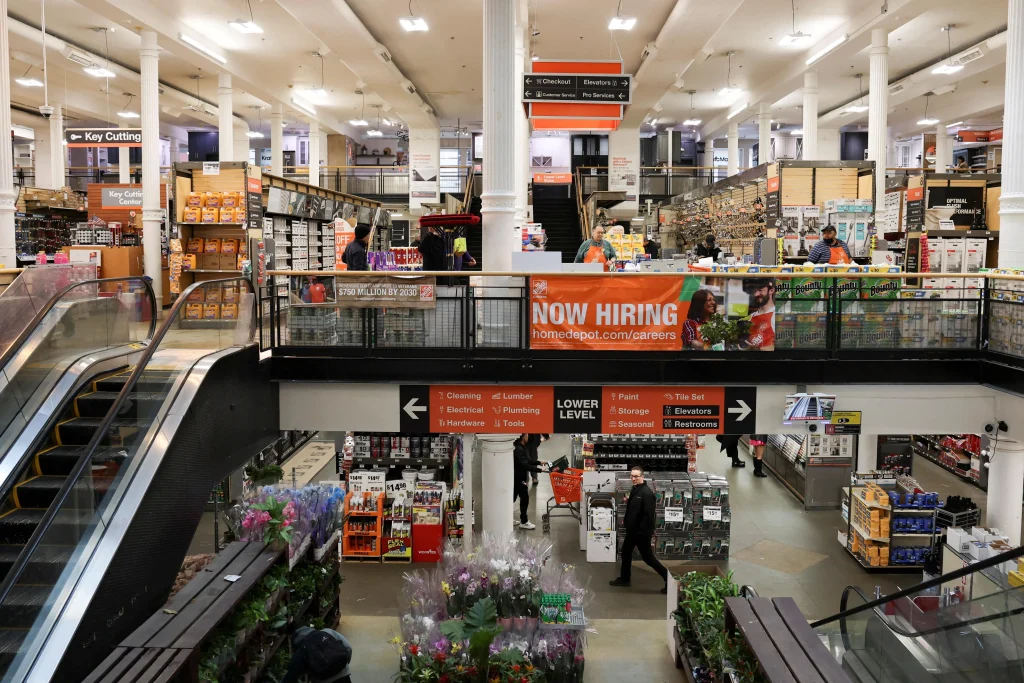FOR all the unwieldiness it entails, scale has always brought enormous benefits in business. Fixed costs are set against more revenue, raising profits and supporting investment. Heft brings bargaining power with suppliers and financiers. From the early 2000s, the advantages of scale became more pronounced. Intangible assets, including software and intellectual property, gave the upper hand to companies that could afford to invest in them. Globalisation provided big companies with more room to grow, as well as access to larger – and cheaper – pools of labour. In America, the gap in profitability between big and small firms widened. Economists began to speak of “superstar” firms racing further ahead of the competition.
Now size is conferring advantages in new ways. Artificial intelligence (AI) is reinforcing the dominance of big firms over small ones. So is Donald Trump’s trade war, which raises the importance of resilience and political sway. Yet these same disruptions could spell danger for America’s corporate giants. Already companies from Apple to Walmart are discovering how their size can make them a target of the president’s wrath.
Start with AI. You might imagine that lumbering leviathans would be too tied up in bureaucracy to make use of the technology. In fact, their scale allows them to invest far more in it than smaller rivals. According to a survey in December by Bain, a consultancy, American companies with more than US$5 billion in revenue had an average annual budget for generative-AI projects of US$27 million, five times the level in the preceding February. Those with between US$500 million and US$5 billion in revenue, by contrast, had set aside US$9 million, up by two-thirds over the same period. JPMorgan Chase, America’s biggest bank, says that it has rolled out AI tools to most of its 320,000 employees. UnitedHealth, the country’s biggest health insurer, claims to have 1,000 different applications for the technology.
Resilience to shocks
That means they are less likely to get into financial trouble during a downturn. It also allows them to bounce back more quickly, as happened following the Covid-19 pandemic. We examined the profitability of listed American companies, as measured by their return on invested capital, in nine non-financial sectors before and after the pandemic. For seven of the nine, the biggest firms – those in the top quintile by revenue – were, on average, more profitable across 2023 and 2024 than they were across 2018 and 2019. The bottom quintile, by contrast, became less profitable in the same number of sectors.
BT in your inbox

Start and end each day with the latest news stories and analyses delivered straight to your inbox.
Bigness tends to also bring greater supply-chain resilience – as important amid a trade war as it was amid Covid-19. “During the pandemic, I kept getting calls from small and medium-sized businesses saying that they could not get shipping capacity. The big companies were, by and large, at the front of the queue,” says Philip Damas of Drewry, a shipping consultancy. Such prioritisation pays when companies are rushing to import products into America before tariff deadlines.
It helps, too, that big companies tend to have more suppliers in more places. A study by the World Economic Forum and Kearney, a consultancy, found that firms which grew their market share in the wake of the pandemic were more likely to have back-up suppliers in a variety of countries for a significant share of the products they procured.
Last, with scale comes an increasingly valuable asset: political capital. We analysed data from OpenSecrets, a non-profit organisation, on the lobbying activities of American firms in the S&P 500 index. The median company in the smallest half of the index by revenue spent nothing on lobbying in 2024, relying solely on groups such as the US Chamber of Commerce to champion their general interests. The median firm in the top quartile, by contrast, spent US$3.3 million on lobbying, five times as much as for the next quartile and twice as much as a share of operating expenses. They also hired a greater number of lobbyists for each employee.
Trump likes to talk directly with the bosses of many of America’s largest companies. In April, those of Home Depot, Target and Walmart, three retail giants, met the president to discuss their concerns over tariffs. Smaller retailers have received no such attention. Trump seems particularly receptive to firms that promise to invest large amounts in America. “So many companies want to come to the White House… (They offer) US$10 billion or more and I am there,” he said during a speech in February. Such direct access is even more important than usual, notes Jorge Guajardo of DGA, a political-advisory firm, because many mid-level positions in the administration have still not been filled.
Big problems
All this helps explain why, since Trump’s inauguration, the Russell 2000 index of America’s smallest listed companies is down by 12 per cent, compared with a drop of only 4 per cent in the S&P 100 index of America’s largest firms. Yet the shifting business landscape also presents dangers for corporate giants. As with all new technologies, incumbents that are too timid in using AI will be exposed to newcomers that have built themselves around it. Then there is the risk that Trump’s trade war results in a lasting reversal of globalisation which limits companies’ access to foreign markets. That scenario would hit big firms harder than small ones. America’s top quintile of listed non-financial firms by revenue derive 23 per cent of their combined sales abroad, compared with just 7 per cent for the bottom quintile.
More attention from politicians may not always be welcome, either. Walmart recently angered Trump by suggesting on an earnings call that it would need to raise prices in response to higher tariffs. Perhaps, no company better exemplifies the risks than Apple. In April, the iPhone-maker won a partial reprieve from tariffs on Chinese-made smartphones. Two weeks later, it said that it would shift the production of its America-bound iPhones to India. Trump was not pleased. On May 23, the president threatened a tariff of “at least 25 per cent” on iPhones sold in America but made elsewhere. No such ire has been directed at the throngs of smaller companies similarly adjusting their supply chains. America’s corporate giants should get ready for some super-sized headaches.
©2025 The Economist Newspaper Limited. All rights reserved


